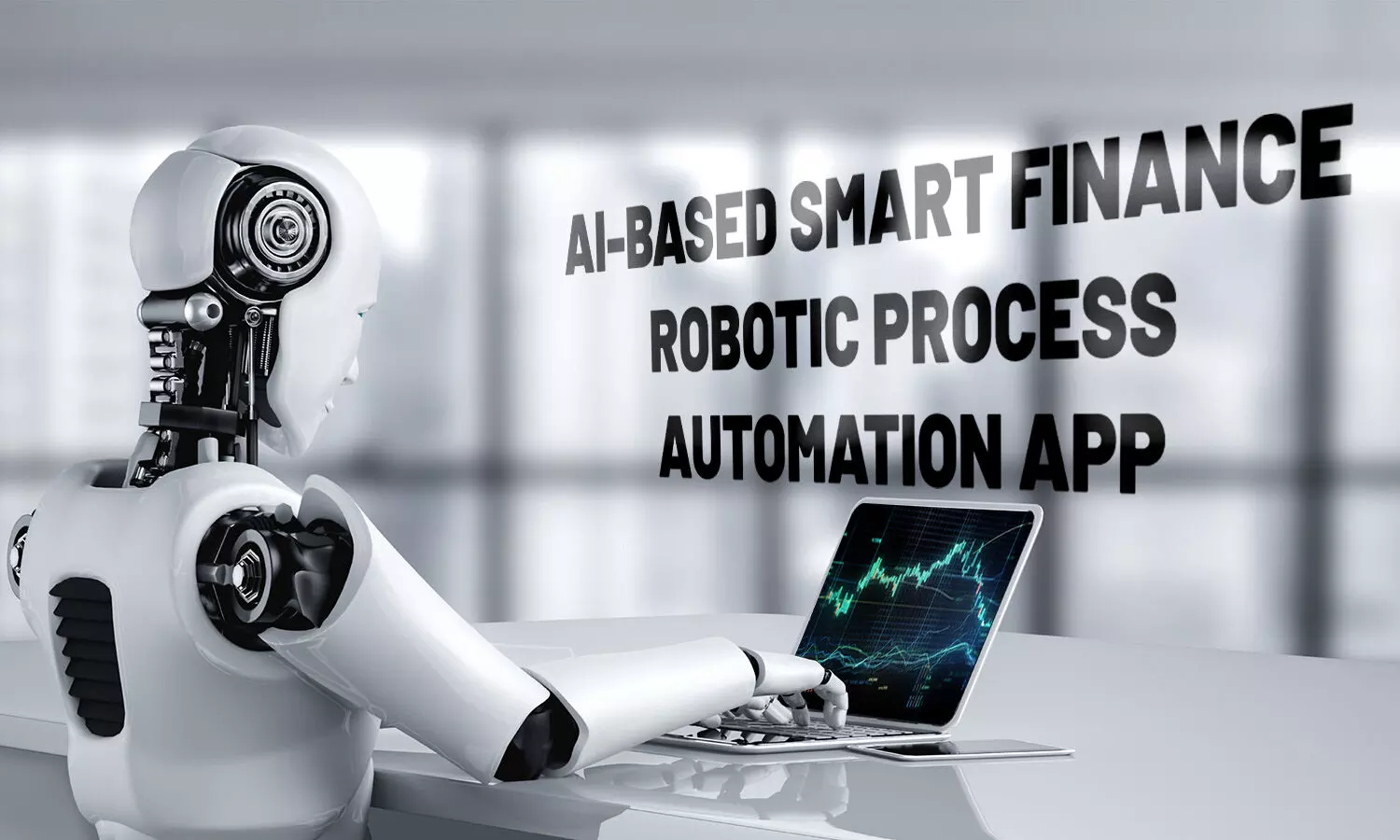AI-based Smart Finance Robotic Process Automation Apps on The Rise
Are you ready to explore the potent synergy of AI and RPA in the financial sector?
image for illustrative purpose

The banking and financial services business is dealing with a complex set of issues, ranging from changing client behaviour to heightened regulatory scrutiny. At the same time, tech giant companies are integrating payment and lending capabilities to attract more users and, in some circumstances, fully disintermediate banks from critical areas of client interactions, reducing their revenue streams.
Individually, technologies like robotic process automation (RPA) and artificial intelligence (AI) have already demonstrated their value in the sector, offering substantial benefits such as improved operational efficiencies, cost savings, and innovative product development. The potential of further integrating RPA and AI is vast, with the promise of amplifying and extending these benefits across a broader spectrum of operational functions.
RPA and AI Integration: A Powerful Combination for Financial Organisations
Robotic process automation (RPA) automates steps in various business processes by creating "bots" based on macros. These bots use predefined rules to execute activities like data entry, cross-checking, and validation. Instead of manually copying and pasting inputs and switching between interfaces, employees can use a single button to reconcile a transaction, generate a bank statement, or cross-validate an invoice entry.
However, RPA does have its limitations. The system is designed to support linear business processes that rely on structured, well-defined data. For instance, an RPA bot may struggle to extract data from images or execute a command if the standard field description contains a typo. Rule-based bots are not equipped to fully automate end-to-end banking operations that require analysis, judgement, or qualitative comparison; this is where artificial intelligence (AI) can step in to bridge the gap.
Artificial intelligence refers to the approaches and procedures computer systems use to mimic human intellect. These include machine learning, deep learning, computer vision, and, most recently, generative AI. Financial organisations can use RPA and AI to speed up more complicated processes such as text or sentiment analysis, document summarising, and statistical analysis of several documents.
What RPA starts, AI continues!
Intelligent automation (IA) enables banks to automate a wide range of backend and customer-facing business processes, including new account openings and accounts payable administration. A bank, for example, can use basic RPA, optical character recognition (OCR), and machine learning to automate receiving, sorting, matching, validating, processing, and paying invoices for goods and services received.
However, not all business procedures require AI. Custom RPA systems can fully handle standardised, rule-based business processes such as transaction data entry and validation, account reconciliation and balance checks, and document verification for new customers, among many others.
An RPA/AI integration is particularly useful when financial organisations want to start processing unstructured data, allow self-service business analytics, or deploy conversational chatbots and copilots for their workers and/or customers.
Benefits of Integrating AI and RPA
RPA automates various manual procedures that require data processing. AI, in turn, simplifies data collection, processing, and production from various sources. By merging the two technologies, banking and financial service organisations can streamline more complicated procedures, resulting in the following benefits:
i) Reduced Operating Costs
Automation reduces operational expenses. Intelligent automation accelerates process execution and decision-making, lowering the cost per unit of output. In addition to enhancing labour productivity, intelligent automation solutions enable cost savings in other areas like inventory management, procurement, and IT security, lowering operating costs.
ii) Optimised Workflows
An AI/RPA combination can cover more steps in normal business processes, eliminating manual (and often unnecessary) steps during execution. By incorporating AI into RPA, financial organisations can not only improve task execution but also enable new self-service analytics use cases, predictive analytics, and forecasting. Machine learning algorithms have also demonstrated their effectiveness in detecting financial fraud, beating older, rule-based methods in areas such as mobile fraud, capital market transactions, and credit card fraud.
iii) Increased Accuracy
Traditional RPA methods minimise errors and inconsistencies by automating structured data processing. Machine learning and natural language processing (NLP) expand these capabilities to unstructured data such as photos, videos, and audio. Optical character recognition (OCR) systems can recognise characters in photos and PDF documents, allowing for data extraction and processing from a broader range of sources and decreasing the need for manual data inputs.
iv) Improved Regulatory Compliance
Several global regulatory authorities and enterprises oversee the financial sector. A single mishap might result in significant fines and reputational damage. Intelligent automation systems provide consistency, accuracy, and transparency in reporting. An RPA solution for financial reporting can automatically collect data for the appropriate period, detect various forms of reporting anomalies, and reconcile indicators for the prior period to compile financial statements.
AI-powered chatbots can replace the long phone wait times and endless forms for customer support requests, enhancing the customer experience. Aside from providing the initial layer of customer assistance, intelligent automation systems can help with other customer support activities like support ticket routing, client request processing, and policy search for banking clerks. Finally, AI assistants can help better promote available products and services by tailoring offers to the customer's profiles.
RPA/AI integration in apps is the next critical step in business process optimisation, allowing financial companies to cover more steps in conventional workflows to:
a) Increase accuracy and lower the chances of errors
b) Enhance employee productivity
c) Get real-time data and insights
So, let us know your views, too!

